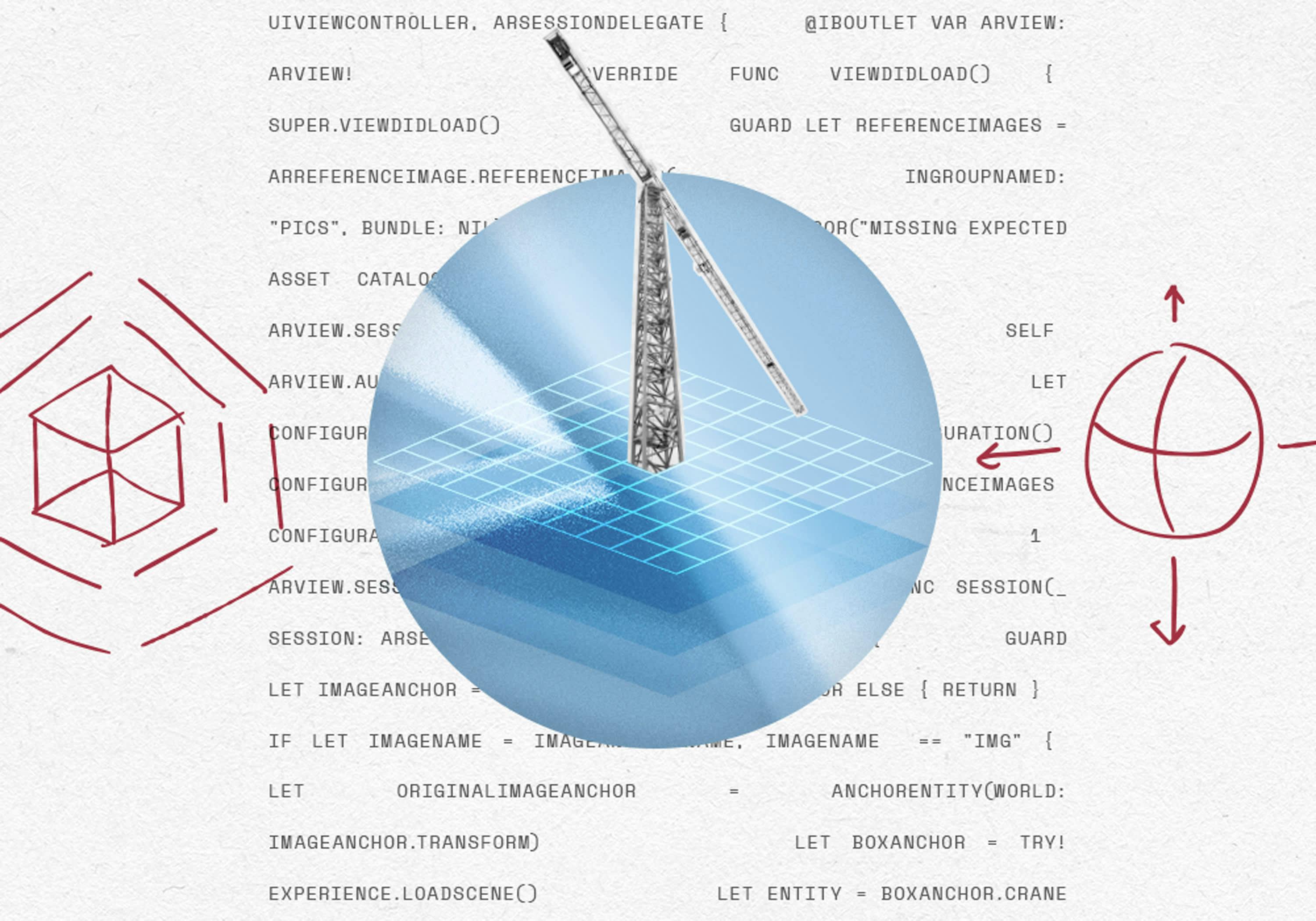From Idea to AR in Just Three Weeks

Move fast, make things
Take risks. Be creative.
Those were the two concepts we had in mind when we set out to create an augmented reality experience for Wolffkran, a German tower crane company we admired from afar but had yet to call a client.
After briefly meeting with the CEO of Wolffkran at the International Tower Crane Conference in Nice, France, we wanted to do something to get Wolffkrann’s attention when we saw them again, while simultaneously challenging our team to concept, design, develop, and deploy a fully functioning piece of technology in three weeks flat.
Our initial brainstorm session led to a number of ideas that felt promising—quickly design an e-commerce page for Wolff Parts; design and develop an online booking portal for the Wolff School of Cranes—but we ultimately settled on an idea that felt both fun and challenging: use augmented reality (AR) to highlight the sheer magnitude of a Wolffkran tower crane.
Start with questions
We had a number of questions we needed to answer before we could begin. How could we provoke an AR instance that felt seamless and intuitive? How could we effectively communicate to an audience that is primarily marketed to via print-magazine publications? How could we bridge the gap between the physical and virtual worlds in a compelling-yet-utilitarian way?
All would be revealed in time, but one thing was clear from the jump: to generate buzz and make a memorable in-person impression, we needed to flex our strategic, technological muscles.
Identify, innovate, elevate
Every innovation begins with an insight, and every insight comes from a thorough investigation.
During our discovery process, we found two recent Wolffkran print ads and noticed there was a lot of room for improvement. Specifically, we concluded that:
- The messaging missed the mark grammatically
- The creative could be more impactful
- The entire print experience could be elevated

We decided to update the messaging and make it stronger and more relevant to an English-speaking audience, while keeping the core idea intact.
Move fast, break things
Our team split into two groups, with one group focused on figuring out the technologies and the other focused on creating campaign messages and creative.
With not a lot of time, we had to brainstorm quickly. We revved on headlines and copy in Figma, ultimately settling on a customer-centered message that showcased Wolffkran’s commitment to innovating new technology as a way of enhancing the overall customer experience. Because we didn’t have access to genuine Wolffkran imagery, we opted to pull a stock tower crane for the ad, which we would ultimately use to clone the AR image.
With our deadline quickly approaching, we made the decision to go old school with the prototype. We compiled the artwork and made a trip FedEx Office where we printed out two copies of the ad and glued them into strategic spots in the magazine—one next to the old Wolffkran ad to give an easy comparison, and one next to a VR article we felt the ad paired well with.
Solving ARKit issues on the fly
ARKit is finicky when it comes to image detection. While the kit is useful and detects stimulus images quickly, it requires an image that is unique enough that ARKit can locate the exact points it needs to render and contain the 3D model that’s being loaded.
We also had to make sure the 3D model stayed fixed in all dimensions on the plane the render was attached to.

During our initial attempts, we had to adjust scale, positioning of elements, and rotation to create a seamless execution—as if the crane was rising from a 2D surface. We wanted to be able to zoom in and out while walking around the model, seeing the various parts of the crane, like the counterweights and cab, up close and personal.
Bringing it together
After extensive testing in low-light, outdoor, and indoor conditions, we had a functioning app that could render a Wolffkran-branded crane when the image in the print ad was detected.

But of course, an iOS app isn’t complete without a proper icon, so we designed a Wolff-red icon that would standout on anyone’s home screen.

Next, we used TestFlight, an online service for over-the-air installation and testing of mobile applications, currently owned by Apple and only offered to developers within the iOS Developer Program, to deploy the demo on each team member’s phone so we all had a working version.
We also finalized our print creative and packaged it up so it was ready to deploy at a moment’s notice.

Conclusion
While we wish we could report that we showed Wolffkran the app and AR experience and they were indeed impressed, but life had other plans. We never did see Wolffkran’s CEO again at the Tower Cranes North America conference, and our emails went unanswered, but we were proud of the work we did and how quickly we did it.
In the end, we took risks and leaned into our creativity, which is good enough for us.
(But hey, Wolffkrann, if you see this, holler back!)



